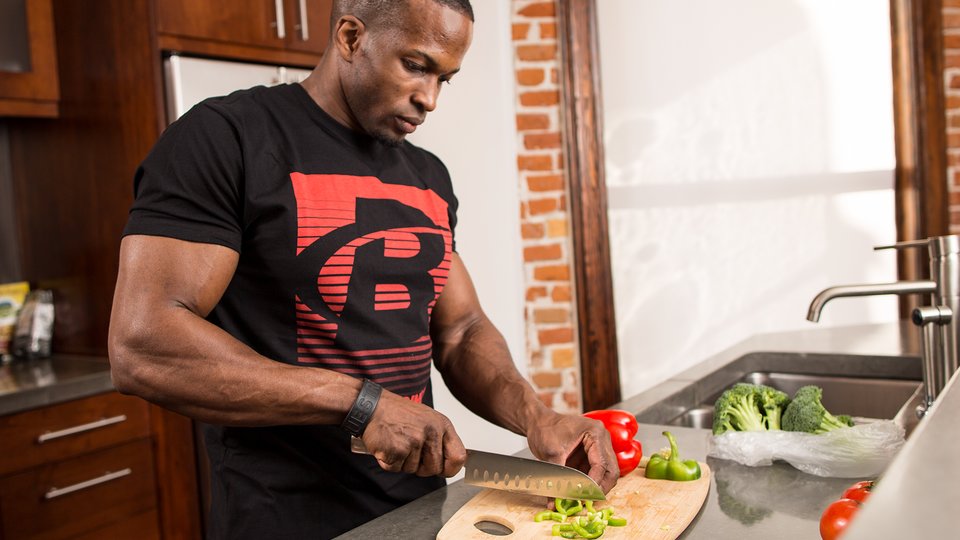Products You May Like
After a summer spent in tank tops and shorts, there comes a day when you put on the sweat pants and start bulking up. It’s grow-time!
So, all you need to do is cram all the protein, carbs, and fats you can into your face, and work your ass off in the gym, right? If only that were the case! The challenge isn’t putting on weight. It’s putting on quality weight. And that takes thoughtful planning, focus, and daily execution.
Here’s how to do it.
Bulking Benefits Everyone
First, you don’t have to be a bodybuilder preparing for a contest to want to add muscle. Whether you are young or old, man or woman, you can benefit at times from bulking.
Some women hesitate to add muscle because they think it will make them look “bulky” or they’ll lose their figure. Done correctly, however, bulking can make you stronger, and leaner.
Adding more muscle becomes even more important as you age. Once you turn 30, you gradually start losing muscle mass, a process known as sarcopenia. With this muscle loss can come a decrease in strength, reduced ability to perform everyday functions, and a reduction in metabolic rate.[1]
Having more muscle will enhance your strength and performance, allow you to eat more calories just to maintain your weight, and enhance your physique after you diet by helping you to appear even leaner. If you use your muscles—and all of us do—then it’s in your best interest to continue to add more muscle mass.
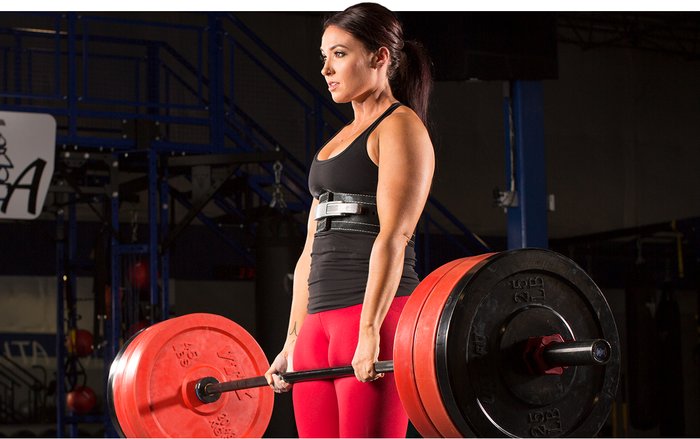
In a perfect world, 100 percent of the weight you gain during a bulking phase would be muscle. But we don’t live in a perfect world. You’ll gain fat mass, too, and the more years you’ve been training, the more fat you’ll gain compared to muscle mass.
Some seasoned lifters may think this means it isn’t worth it to bulk up. It is true that, in the short term, these lifters will gain both muscle and fat mass. But in the long term, and after multiple successful bulking, maintaining, and dieting phases, their net weight gain will be nearly 100-percent muscle.
When is the Right Time to Bulk?
There are limits to how effective bulking can be. Your body builds muscle most efficiently when it’s at its leanest. That’s because you’re far more insulin sensitive when you’re carrying less body fat.[2]
Being insulin sensitive means that your body can more efficiently use glucose as an energy source instead of storing it in fat cells.
Men should strive to have less than 12 percent body fat before bulking. If you don’t have access to reliable body composition testing, use the four-pack guideline as your deciding factor: If you can see at least four abs, you’re lean enough to bulk.
If not, your best bet is to begin with a dieting phase, then transition into a bulking phase once you lean out. This will enhance insulin sensitivity and muscle-building efficiency when you transition to a bulking phase.

Women, on the other hand, should consider bulking when they have less than 24-percent body fat. A good rule of thumb is that if you can see your top two abs, you’re lean enough to start bulking.
Both “ab rules“ are just guidelines. In general, you shouldn’t even consider bulking if you feel like you’re too heavy. If you can’t see those abs, shed some pounds before you start trying to add muscle. For more information on how to prepare yourself for bulking, read “The Smart Way to Build a Fat-Loss Diet.”
How Much Should I Eat When I’m Bulking
If you want to lose weight, you must burn more calories than you consume, and if you want to gain weight, you must consume more calories than you burn. It’s that simple. But finding that perfect number of calories can take effort.
Step 1: Find out your daily calories needs. Begin by using this calculator to estimate your baseline calorie needs, also known as your total daily energy expenditure (TDEE).
After inputting some basic information about yourself, select “maintenance” under the “goal” section. Also, make sure you choose an appropriate “activity level.” Be honest. You don’t get bonus points for inflating your activity level.
If you do say you’re more active than you are, you’ll end up with a higher estimated daily calorie number and be more likely to add additional fat. So be honest with yourself about how active you are. If you want to consume more calories, slowly increase your activity level to one you can maintain.
The next step is to find your macros for maintenance. You can adjust these macros later to meet your specific goals, but first you need a solid foundation.
Step 2: Find out how much daily protein you need. Once you have your TDEE number from the calculator, decide how you’re going to distribute those calories every day between the three macronutrients: protein, carbohydrates, and fat.
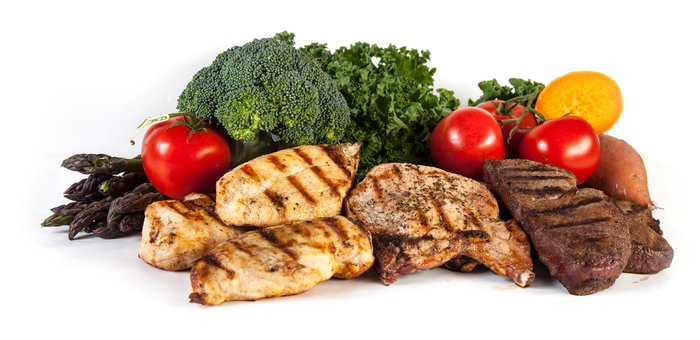
Let’s say you’re a 185-pound person who exercises for 90 minutes a day. Per the calculator, you’ll need about 2,852 calories a day to maintain your weight. Set your daily protein goal at 1.0 gram of protein per pound of your body weight (not lean body weight). So, you’ll need 185 grams of protein per day.
You then need to multiply this number by four to determine the number of calories you’ll get by eating this much protein. If you weigh 185 pounds, you’ll need to get 740 calories (185 times 4) every day from protein.
Calories Per Gram:
- Protein: 4
- Carbohydrates: 4
- Fat: 9
Step 3: Find out how much daily carbohydrate you need. To determine how many grams of daily carbs you’ll need, start by referring to the following list and selecting how long you train every day. If you train for 90 minutes a day, multiply your body weight times 1.5. At 185 pounds, you’ll need 278 grams of carbs. If you train longer or shorter, adjust your carb intake accordingly.
- Non-training day: 0.5 grams
- Less than 45 minutes: 0.75 grams
- 45-75 minutes: 1.0-1.25 grams
- 90-120 minutes: 1.5-2.0 grams
- 120 or more minutes: 2.0 grams
Looking at the macronutrient chart, notice that you get 4 calories for every gram of carbohydrate too, so multiply the 278 grams times four, which equals 1,112 calories from carbs.
Step 4: Find out how much daily fat you need. To figure out your fat macro, first add together the calories you’ll get from protein and carbs. So far our example has 740 calories from protein, and 1,112 from carbs for a total of 1,852 calories.
Now subtract this number from the total daily calories you got from the calculator. Our example had 2,852 calories, so subtracting 1,852 calories means you’ll need to get 1000 calories from fats. Referring again to the macronutrient chart, you’ll see that you need to divide this number of calories by 9 to determine the number of grams of fat you’ll eat every day. Our example: 1,000 calories divided by 9 equals 111 grams of fat per day.
Here are the daily macros for a 185-pound person who trains for 90 minutes a day:
- Protein: 185 grams (1.0 gram per pound of bodyweight)
- Carbohydrates: 278 grams (1.5 grams per pound of bodyweight )
- Fat: 111 grams (0.6 grams per pound of bodyweight )
You can also get macro numbers by using a macronutrient calculator. Do it both ways and compare!
Keep Track of Your Weight and Adjust Accordingly
As you begin your bulking plan, weigh yourself on days 1, 4, and 7 to see if there is a trend. If your weight stayed within 0.5-1 percent of your body weight or if you lost weight, add 10 percent more calories to each of your macros.
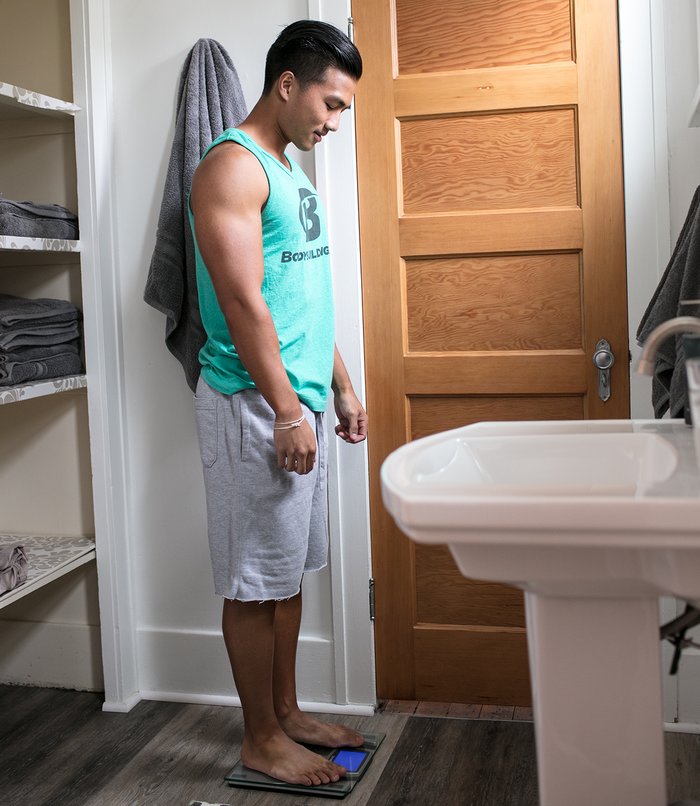
If you gained more than 1 percent of your body weight during the week, keep your macronutrient goals as they are, then reassess your weight change after another week of consistent eating.
How and When to Consume Your Daily Protein
Now that you know how much protein to eat every day, you need to understand how much protein to consume at each meal to maximize the muscle-building response.
Most people will benefit from consuming 25-35 grams of protein every 3-5 hours. Smaller individuals should target the lower end, while larger individuals should target the higher end. Once you determine your daily protein goal, distribute this equally across four to six meals each day. In the example above, the 185-pound person should consume about 31 calories per meal.
That can mean a lot of meal prep. One way to get around it is to make protein shakes.
Make sure the protein you’re consuming comes from high-quality sources, rather than trace grams from non-protein foods. Get your complete proteins from lean poultry, beef, pork, seafood, eggs, whey, and dairy. Don’t count every single gram of the incomplete protein you might get from your oats, rice, or nut butters. These incomplete proteins lack the nutrients you need to maximize the muscle-building response.
How to Progress Through a Bulking Phase
Now you know how to consume your daily calorie needs. To start bulking, add 10 percent more calories. In the example above, 10 percent of 2,852 calories is 285 calories. They would add 285 calories to their previous allowance, now consuming 3,137 calories per day.
This first adjustment should come in the form of additional carbohydrate. To determine the amount of carbohydrate to add to your day, divide the new additional calories by four to get grams of carbohydrate. Try to distribute it evenly across your pre-workout, intra-workout, and post-workout meals.
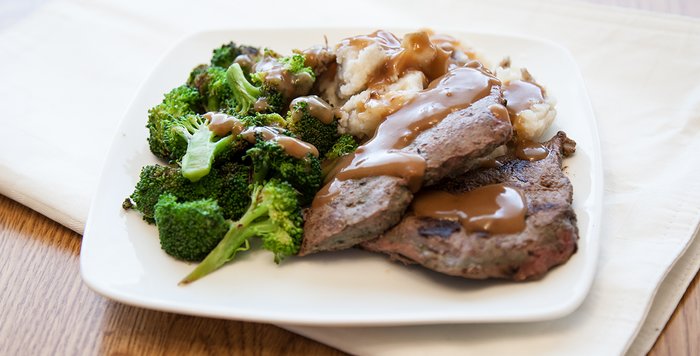
After you make this first adjustment, continue tracking your weight three times per week, comparing your weekly average gain or loss to the previous weeks. You may be tempted to constantly adjust your caloric intake. For best results over the long term, stay on your adjusted plan for 2-4 weeks before you make any more adjustments.
Your overall bulking goal should be to gain 0.25-0.50 percent of your body weight each week. If you gain weight too quickly, you may end up gaining more fat mass than you want. If you don’t gain weight, you probably won’t be building much muscle.
If you’re not meeting this goal, add an additional 10 percent to your current daily calorie allowance. If your goal was to consume 2,000 calories a day, add 10 percent to that to get a daily total of 2,200 calories per day.
You first added extra calories by adding extra carbs. As you keep adjusting your daily calories, extra carbs should come from both carbohydrates and fats. Shoot for getting 50-75 percent of these new calories from carbs and the rest from fats.
Bulking phases usually last 10-14 weeks due to a kind of built-in limiter. As you continue to increase the number of calories you eat per day, your body will start adding less muscle and more fat. Just as being lean increases insulin sensitivity, gaining weight through a bulking phase decreases your insulin sensitivity, causing more glucose to get converted into fat.
Transition Carefully from Bulking to Maintenance
Once you finish your bulking phase, you need to transition to a post-bulking maintenance phase. This phase is characterized by a slight reduction in calories, mostly from carbs. This reduction serves as a “reset” to help your body start improving its insulin sensitivity and grow accustomed to carrying more muscle than before.
If you try to transition from a bulking phase immediately into a dieting phase, you significantly increase the likelihood that you’ll lose the muscle mass you just worked so hard to put on. The post-bulking maintenance phase should last 4-6 weeks. Afterward, you’re ready to transition into another bulking phase or a dieting phase.
References
- Evans, W. J. (1995). What is sarcopenia? The Journals of Gerontology Series A: Biological Sciences and Medical Sciences, 50(Special_Issue), 5-8.
- Segal, K. R., Landt, M., & Klein, S. (1996). Relationship between insulin sensitivity and plasma leptin concentration in lean and obese men. Diabetes, 45(7), 988-991.
